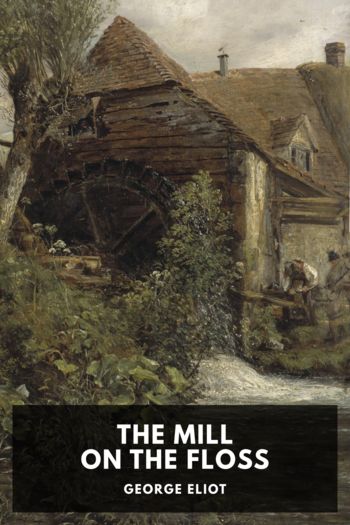Riders of the Purple Sage by Zane Grey (best thriller books to read .TXT) 📕

Description
In a small Mormon community in southern Utah, Jane Withersteen, a young, unmarried Mormon woman faces growing pressure to marry a local elder of her church. Elder Tull, a polygamist, already has two wives and seeks to marry Jane not just for her beauty, but to take control of the ranch her late father passed on to her.
Jane’s resistance to marriage only serves to increase the mounting resentment against “Gentiles” (non-Mormons) in the area. Bern Venters, one of Jane Withersteen’s ranch hands and potential suitor, becomes the focus of this resentment and is nearly killed by Elder Tull and his men before a mysterious rider interrupts the procedure. The rider, a man named Lassiter, is a gunslinger known for his exploits in other Mormon settlements further north.
Lassiter’s intercession on Venters’ behalf sets off a chain reaction of threats, violence, theft, and murder as Jane Withersteen fights to maintain both her ranch and her independence.
First published in 1912, Riders of the Purple Sage is considered to have played a prominent role in shaping the Western genre. It was Zane Grey’s best-selling book and has remained popular ever since.
Read free book «Riders of the Purple Sage by Zane Grey (best thriller books to read .TXT) 📕» - read online or download for free at americanlibrarybooks.com
- Author: Zane Grey
Read book online «Riders of the Purple Sage by Zane Grey (best thriller books to read .TXT) 📕». Author - Zane Grey
He slipped from cedar to cedar, keeping them between him and the open valley. As he progressed, the belt of trees widened and he kept to its upper margin. He passed shady pockets half full of water, and, as he marked the location for possible future need, he reflected that there had been no rain since the winter snows. From one of these shady holes a rabbit hopped out and squatted down, laying its ears flat.
Venters wanted fresh meat now more than when he had only himself to think of. But it would not do to fire his rifle there. So he broke off a cedar branch and threw it. He crippled the rabbit, which started to flounder up the slope. Venters did not wish to lose the meat, and he never allowed crippled game to escape, to die lingeringly in some covert. So after a careful glance below, and back toward the canyon, he began to chase the rabbit.
The fact that rabbits generally ran uphill was not new to him. But it presently seemed singular why this rabbit, that might have escaped downward, chose to ascend the slope. Venters knew then that it had a burrow higher up. More than once he jerked over to seize it, only in vain, for the rabbit by renewed effort eluded his grasp. Thus the chase continued on up the bare slope. The farther Venters climbed the more determined he grew to catch his quarry. At last, panting and sweating, he captured the rabbit at the foot of a steeper grade. Laying his rifle on the bulge of rising stone, he killed the animal and slung it from his belt.
Before starting down he waited to catch his breath. He had climbed far up that wonderful smooth slope, and had almost reached the base of yellow cliff that rose skyward, a huge scarred and cracked bulk. It frowned down upon him as if to forbid further ascent. Venters bent over for his rifle, and, as he picked it up from where it leaned against the steeper grade, he saw several little nicks cut in the solid stone.
They were only a few inches deep and about a foot apart. Venters began to count them—one—two—three—four—on up to sixteen. That number carried his glance to the top of his first bulging bench of cliff-base. Above, after a more level offset, was still steeper slope, and the line of nicks kept on, to wind round a projecting corner of wall.
A casual glance would have passed by these little dents; if Venters had not known what they signified he would never have bestowed upon them the second glance. But he knew they had been cut there by hand, and, though age-worn, he recognized them as steps cut in the rock by the cliff-dwellers. With a pulse beginning to beat and hammer away his calmness, he eyed that indistinct line of steps, up to where the buttress of wall hid further sight of them. He knew that behind the corner of stone would be a cave or a crack which could never be suspected from below. Chance, that had sported with him of late, now directed him to a probable hiding-place. Again he laid aside his rifle, and, removing boots and belt, he began to walk up the steps. Like a mountain goat, he was agile, surefooted, and he mounted the first bench without bending to use his hands. The next ascent took grip of fingers as well as toes, but he climbed steadily, swiftly, to reach the projecting corner, and slipped around it. Here he faced a notch in the cliff. At the apex he turned abruptly into a ragged vent that split the ponderous wall clear to the top, showing a narrow streak of blue sky.
At the base this vent was dark, cool, and smelled of dry, musty dust. It zigzagged so that he could not see ahead more than a few yards at a time. He noticed tracks of wildcats and rabbits in the dusty floor. At every turn he expected to come upon a huge cavern full of little square stone houses, each with a small aperture like a staring dark eye. The passage lightened and widened, and opened at the foot of a narrow, steep, ascending chute.
Venters had a moment’s notice of the rock, which was of the same smoothness and hardness as the slope below, before his gaze went irresistibly upward to the precipitous walls of this wide ladder of granite. These were ruined walls of yellow sandstone, and so split and splintered, so overhanging with great sections of balancing rim, so impending with tremendous crumbling crags, that Venters caught his breath sharply, and, appalled, he instinctively recoiled as if a step upward might jar the ponderous cliffs from their foundation. Indeed, it seemed that these ruined cliffs were but awaiting a breath of wind to collapse and come tumbling down. Venters hesitated. It would be a foolhardy man who risked his life under the leaning, waiting avalanches of rock in that gigantic split. Yet how many years had they leaned there without falling! At the bottom of the incline was an immense heap of weathered sandstone all crumbling to dust, but there were no huge rocks as large as houses, such as rested so lightly





Comments (0)